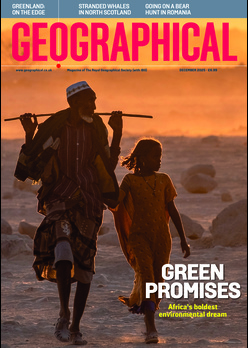
Drought and rising temperatures are drying up Iran’s valuable saffron harvests and causing world prices to rise dramatically
By
It’s only small, but the beautiful, mauve-blue flower with its distinctive crimson coloured stigma, is certainly noticeable. It’s just that now you will have to look a little harder for it.
Saffron, which is used by chefs to add that final flourish of delicate flavouring, is one of the world’s most valuable spices. It comes from the saffron crocus and is grown in parts of Mediterranean France, Spain and Italy as well as India. But, it’s in Iran that the best quality saffron crocuses are grown. With prices of Iranian saffron sometimes reaching an average of US$800-900 per kilo on international markets, saffron harvesting has long been a major economic contributor to the parts of rural Iran where it grows.
It takes up to 170,000 flowers to produce just one kilo of saffron, but drought is having a major impact on Iran’s saffron harvest with production falling by more than 50 per cent in some areas in the past year. And, with Iran supplying about 90 per cent of the world’s saffron, that is having a major impact on both global supply and the economy of the parts of Iran where saffron grows.
The heart of the Iranian saffron industry is the city of Torbat-e-Jam in the semi-arid Khorasan province in the northeast of the country and not far from the border of Afghanistan. In this region, saffron, which is simply the stigma of the saffron crocus, is known as ‘desert gold’ and the harvesting of it supports many rural families. In 2022, the area produced 400 tonnes of saffron, but a year later and that total is estimated to have fallen dramatically to around 180 tonnes. Saffron producers say that this was due to a very cold winter in 2022-23 followed by a spring that was unusually dry and then a searingly hot summer when temperatures sometimes flirted with 50 degrees Celsius. This long, hot and dry period led to surface wells drying up and drought-like conditions setting in, which in turn led to a wide-spread failure of the saffron harvest.
With prices for Iranian saffron almost doubling this is leading to a dramatic impact on exports as buyers look to cheaper producing markets elsewhere. For the estimated 100,000 families in Khorasan province reliant on the saffron economy this is bad news and has led to calls for the Iranian government to intervene to protect their livelihood. Iranian environmentalist and desert researcher, Mohammad Darvish warns that extremes such as were seen in 2023 are not one off events but are linked to climate change patterns around the world, but that Iran is ‘more vulnerable’ to the impacts of climate change than many other parts of the world and that this is especially the case in the kind of semi-arid areas where saffron is grown.
Related articles:




